We fight cladosporiosis of tomatoes in a greenhouse easily and effectively: the best methods and recommendations of summer residents with experience
Getting a rich harvest is the desire of every vegetable grower, but, unfortunately, not everything depends on the efforts made. It happens that preventive measures are taken, but the plants still get sick. One of the most common diseases of nightshades grown in closed areas is brown olive blotch, or cladosporiosis.
From the article you will learn what kind of disease this is - cladosporiosis of tomatoes in a greenhouse, how to treat it and how to protect the crop from death. The material contains advice from experienced summer residents and photos of the manifestation of the disease on plants.
What kind of disease is this
Cladosporiosis is often called brown spot. The disease is a fungal disease and can infect plants en masse. Due to the disease, there is a risk of losing 50% of the harvest. Cladosporiosis often affects seedlings grown in a greenhouse or greenhouse.
The disease is almost impossible to cure, since its pathogen is able to maintain its vital activity for 10 months, even in unfavorable weather conditions. It can overwinter in the ground and infect seedlings again in the new season. The fungus spreads in the form of dust with spores - it can be brought by the wind from a neighboring area. One of the conditions for the spread of the disease is high humidity.
How does it affect tomatoes?
One infected bush can cause the death of the entire seedlings. The symptoms of cladosporiosis cannot be confused with another disease: brown spots and a gray coating form on the leaves, then they begin to turn yellow and fall off. The stem and fruits remain intact, but the plants begin to suffer, having lost their green mass.
The tomatoes do not ripen and begin to rot and wrinkle. Large tomatoes may develop raised brown spots. At the first symptoms of the disease, begin treatment immediately.
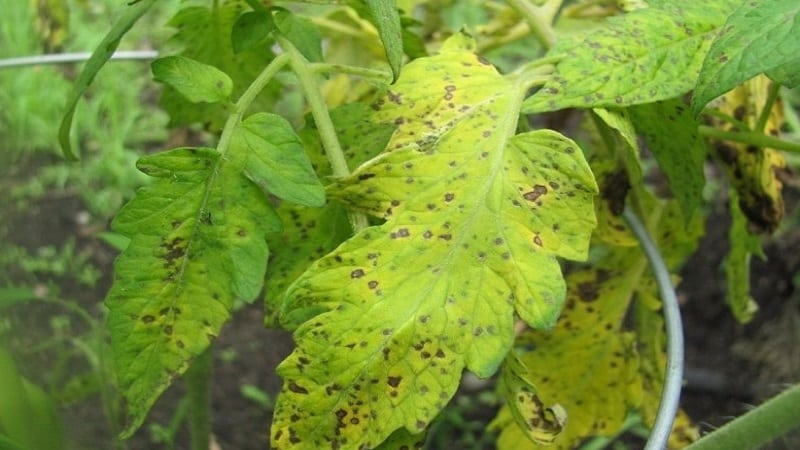
Symptoms and external signs
Cladosporiosis develops gradually; the disease can be recognized during flowering and fruit formation. Already in July, you can see characteristic light spots on the leaves; a change in their color to brown indicates the beginning of the process of withering of the plant.
If treatment is not started, the surface of the leaf thickens and becomes velvety to the touch. Then the green mass of the plant falls off, which affects the process of fruit formation.
Description of the stages of disease development:
- Initial — symptoms appear during flowering. Light green spots appear on the outside of the leaf, and a light gray coating forms on the inside.
- Progressive - The upper leaves are affected, but the stem and fruits remain intact. The surface of the leaf becomes denser, becomes velvety, and the green mass of the plant loses its shape and color. The spots on the leaves darken and become brown; their more intense color is observed on the inner surface of the leaf.
- Active — leaves fall, the plant withers, fungus attacks the fruits. No method can save seedlings.
Causes of infection
Cladosporiosis most often affects plants grown in unheated greenhouses or greenhouses. The first symptoms appear in the second half of summer, in the southern regions - already in the spring.
The causative agent of the disease
The causative agent of cladosporiosis is a fungus Cladosporium fulvum Cooke. It is distinguished by its durability: it can withstand both cold and heat for 10 months. Infection occurs when the mycelium of the microorganism enters the plant. The pathogen is constantly evolving, adapting to drugs.
The fungus gets on the plants and begins to germinate. The manifestation of its vital activity can be seen in the middle of the growing season. Weakened leaves are the first to be affected.
Important! In addition to leaves, the fungus attacks flowers and young ovaries.
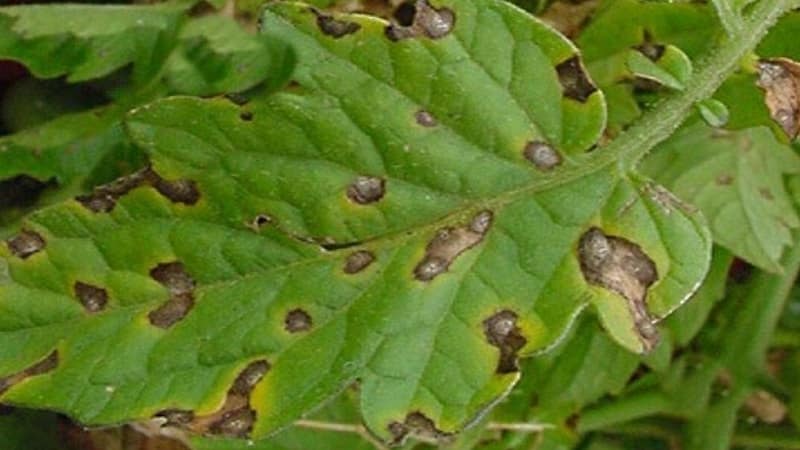
Terms of distribution
The fungus reproduces by conidia (spores), which, due to their lightness, are carried by the wind. The source of infection can also be ordinary objects on which the pathogen came into contact: gardening tools, shoes, water for irrigation.
Peculiarity. The disease is not typical for seedlings grown in open ground.
Fungal spores become active at elevated humidity levels, which is not uncommon in greenhouses. Another factor stimulating the active phase is temperature changes. The optimal indicator for the life of the fungus is +22...+25C with a humidity of 80%. If the humidity drops to 70%, the proliferation of microorganisms stops.
How and with what to treat
Treatment of cladosporiosis directly depends on the degree of spread of the disease. If you start fighting the disease immediately after identifying light spots, the chances of success are high. If you ignore the disease, there is a chance of losing the entire harvest.
There are two ways to fight diseases: folk remedies and chemistry. For effective treatment, an integrated approach is used.At the first stage, you can tear off the affected leaves and treat with products; when brown spots appear, it is unlikely that anything will help the plant; it is removed from the garden along with the roots.
Chemicals
Chemicals effectively combat the causative agent of cladosporiosis; they are used even when plants are severely damaged by the disease. Before use, carefully read the instructions and do not violate the manufacturers' recommendations.
It is best to carry out processing in the evening; it is important that there is no rain or strong wind during this period. You can repeat the procedure after two weeks.
Important! Apply chemicals at least a month before harvest.
Broad-spectrum fungicides are suitable for treating brown spot:
- "HOM";
- "Bravo";
- "Polyram";
- "Abiga Peak";
- "Ditan NeoTek 75";
- copper oxychloride.
Traditional methods
The methods used by people are effective only at the beginning of the disease; it will not be possible to cure plants from brown olive spot at an advanced stage.
The following remedies help neutralize the fungus best:
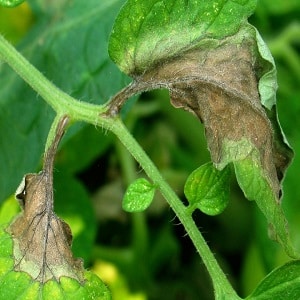 whey - pour 1 liter of whey into a bucket of water, the solution is suitable for spraying;
whey - pour 1 liter of whey into a bucket of water, the solution is suitable for spraying;- infusion of garlic and iodine - for 1 bucket of water you will need 30 drops of iodine, 1 clove of garlic or 500 g of arrows;
- chloride iodine — the product is suitable for pre-planting treatment of soil and seedlings. 30 g of potassium chloride and 40 drops of iodine are dissolved in a bucket of water. When disinfecting the soil, the solution should reach a depth of 10 cm;
- milk solution with iodine - you will need 0.5 liters of milk, 5 liters of water and 15 drops of iodine;
- decoction wood ash - Boil 300 g of ash in 10 liters of water for 25 minutes, then leave to steep for two days;
- manganese solution;
- 1% solution of Bordeaux mixture;
- colloidal sulfur solution - 3 tbsp. dry matter is mixed with 1 tbsp. copper sulfate and 3 tbsp. polycarbacin. The concentrate is diluted in 10 liters of water and 2 tablespoons are added. liquid soap;
- yeast - for spraying use a solution prepared from a dry or wet product.
Attention! For greater effectiveness, you can add liquid soap to the finished solution. Soapy water protects against pests and promotes plant health.
Agrotechnical techniques
At the first signs of disease, you should check the density of the beds. If during planting in the ground the plants were planted in a heap, it is worth thinning out the area so that air can circulate freely between the bushes. The distance between low-growing tomatoes should be 40-50 cm, the beds should be no closer than 50-70 cm.
Effective protection against nightshade diseases is compliance with the rules of crop rotation. You cannot plant tomatoes in the same area year after year. The causative agent of cladosporiosis can remain in the soil for up to a year and infect new seedlings. It is recommended to plant tomatoes in the same beds only after 3-4 years.
Preventive measures
It is better to prevent the onset of a disease than to try to cure it later. In the case of brown olive spot, the most effective measure is to maintain conditions in the greenhouse that are unfavorable for the fungus.
Prevention:
- maintain optimal humidity, temperature and lighting;
- remove plant residues and debris after harvesting;
- regularly treat the greenhouse frame with disinfectants;
- carry out pre-planting soil treatment;
- observe crop rotation;
- choose varieties for planting that are resistant to the disease;
- When planting seedlings, maintain a distance between bushes;
- do not flood the plants;
- mulch soil with sawdust, chopped grass and plastic film;
- Regularly ventilate the room or install a ventilation system.
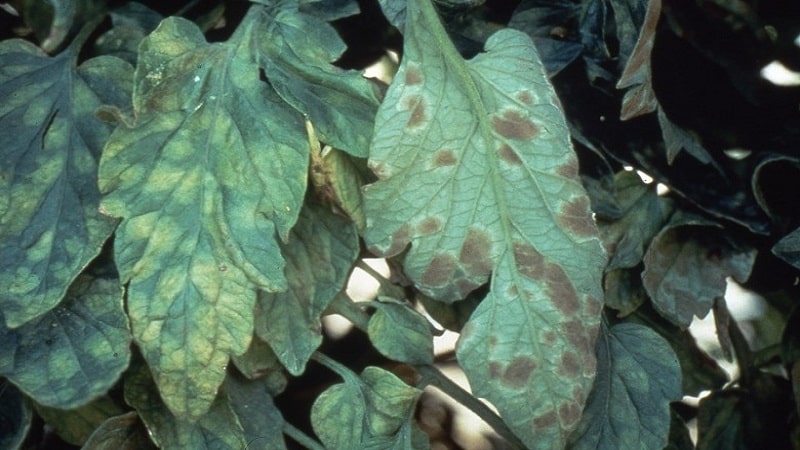
Advice from gardeners
Tomato resistance to the disease is the main factor of protection against brown spot. Breeders are constantly developing new crop hybrids, which are not only characterized by high yields, but also by the percentage of survival.
These varieties and hybrids include:
- Delicacy;
- Giant;
- Vezha;
- Pink Paradise F1;
- Pink Magic F1;
- Our Masha F1;
- Vitador F1;
- Space Star F1;
- Swallow F1;
- Funtik;
- Pinky F1;
- Evpator;
- Business Lady F1.
To prevent cladosporiosis, the following drugs are used: Fitosporin-M, Pseudobacterin-2, Integral, Gamair and Alirin-B. After the first treatment, the procedure is repeated after 20 days.
You can increase the resistance of tomatoes to cladosporiosis by treating the plants with an infusion of herbs: nettle and dandelion. The plants are crushed and garlic slices are added to them, after which the ingredients are poured with water and left for two days.
Experienced summer residents have noticed that the fungus is killed by the following pharmaceutical drugs: Trichopolum, Metronidazole and Furacilin.
Rules for using drugs:
- At the beginning of the season, treat the seedlings with Metronidazole - dissolve 13-15 tablets of the drug in 1 liter of water. You need to thoroughly wipe all the tomato leaves with the solution.
- "Trichopol" is suitable for regular preventive treatment. The procedure is carried out every 10-14 days - 1 tablet of the drug is dissolved in 1 liter of water. The product not only kills fungal spores, but also protects tomatoes from re-infection.
- Tomatoes are treated with Furacilin three times during the entire growing season - 1 tablet of the drug is dissolved in 1 liter of water.
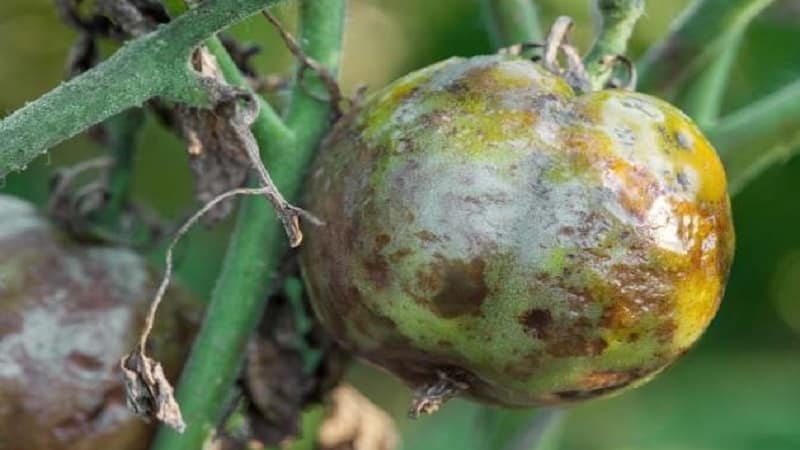
Conclusion
Cladosporiosis is a common disease of nightshades, characteristic of greenhouses and greenhouses. According to reviews from experienced gardeners, the disease can be cured using folk remedies. At the initial stage they are effective, but with further spread of the pathogen, chemicals will have to be used. A plant that has lost its leaves cannot be saved - it is uprooted and burned.
Prevention is the best defense against disease, but sometimes it does not help to completely eliminate the possibility of plant infection. Therefore, when choosing tomatoes, it is better to give preference to varieties resistant to cladosporiosis.